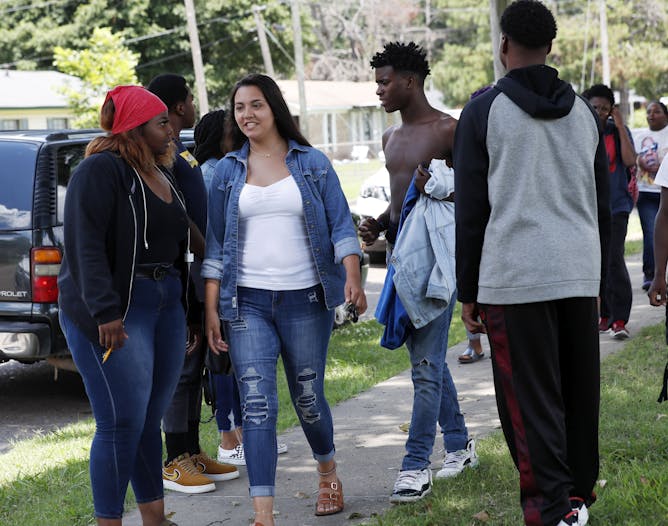|
While the United States is becoming increasingly diverse, its public schools remain stubbornly segregated by race and class. This is despite the nearly seven decades that have passed since the landmark Supreme Court decision known as Brown v. Board of Education. The case, which outlawed segregation in the nation’s public schools, was decided on May 17, 1954.
However, “the court’s declared goal of integrated education is still not yet achieved,” writes Pedro A. Noguera, a sociologist and professor of education at the University of Southern California, where he also serves as dean of the school of education. “[T]hroughout the nation, poor children of color are most likely to attend schools where they are not only separated by race and class, but where the quality of the education they receive is below that of their white peers.”
Noguera examines the demographics of K-12 education today and takes a closer look at some of the reasons why the nation’s schools often don’t reflect its growing diversity.
Also today:
|

|
Jamaal Abdul-Alim
Education Editor
|
|

Pedro A. Noguera, University of Southern California
Though the 1954 Brown v. Board ruling required the integration of public education, US schools remain separated by race.
|
Science + Technology
|
-
Chris Impey, University of Arizona
Sagittarius A* is a massive black hole at the center of the Milky Way. Now that astronomers have imaged it, they can begin to learn more about black holes within other galaxies across the universe.
-
Astrid Schütz, University of Bamberg; Brad Bushman, The Ohio State University
For a while it was all the rage to adopt Wonder Woman’s famous stance and other body positions that allegedly pumped up your confidence – until more studies of the phenomenon failed to find the connection.
|
|
Environment + Energy
|
-
Deepak Ray, University of Minnesota
A new study finds that by 2030, less than one-third of the world’s major crop harvests will go directly to feed people.
-
William R.L. Anderegg, University of Utah
More carbon dioxide in the air doesn’t necessarily mean more growth for trees, and the increasing risk of wildfires and drought has major consequences, as an interactive map shows.
|
|
Health + Medicine
|
-
Elana Bernstein, University of Dayton
Up to 20% of US children have an anxiety disorder, and many suffer in silence.
|
|
Politics + Society
|
-
Eleanor Paynter, Cornell University
Italian aid workers charged with helping migrants travel through the country were acquitted in May 2022. But migrants are often not well received in Europe, despite a welcome of Ukrainian refugees.
|
|
Ethics + Religion
|
-
Nancy S. Jecker, University of Washington
The definition of personhood is a key and contested philosophical issue that has made legalized abortion such a longstanding controversy.
|
|
Economy + Business
|
-
Gretchen E. Ely, University of Tennessee
These nonprofits help with abortion access, but on average they don’t cover all costs, researchers have found.
-
Sabrina Habib, University of South Carolina
With companies encouraging greater teamwork, an expert outlines how to innovate effectively and problem solve as a group.
|
|
Podcast 🎙️
|
-
Daniel Merino, The Conversation
Two ADHD researchers discuss advancements in the diagnosis and treatment of adult ADHD.
|
|
From our international editions
|
|
|
|
The Conversation Quiz 🧠 |
|---|
| | More from The Conversation US |
|---|
| |
|
| |
| |
| |
| |
|
|